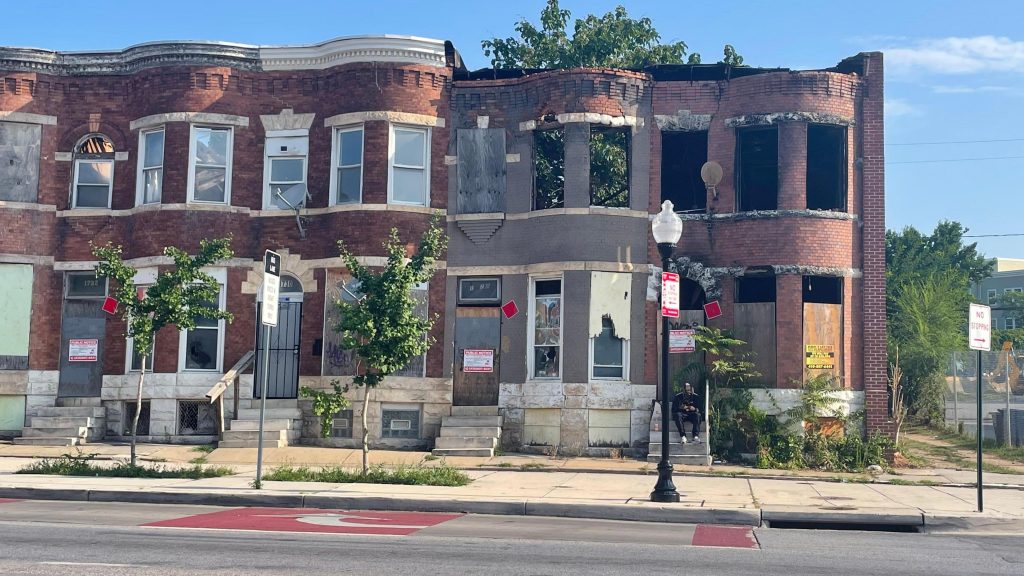Can $1 Homes Tackle Urban Decline?
3 min read
Baltimore has launched a new homes for $1 scheme

Baltimore has launched a new homes for $1 scheme
The concept of selling homes for just $1 to combat urban blight has been a controversial topic in various parts of the world for decades. This approach, initially introduced in the U.S. about fifty years ago, has sparked debate over its effectiveness and the implications for communities.
In the Pigtown neighborhood of Baltimore, Judy Aleksalza’s house stands as a testament to this initiative. She purchased her dilapidated property in 1976 for the same price as her neighbors: $1. After investing significant time, money, and effort into renovations, she transformed it into a home. “It was a horror story,” she recalls, describing her struggles with contractors and weather-related issues. Despite the challenges, Judy emphasizes the emotional and psychological benefits of homeownership, stating, “But you know, after it was all over, I said, ‘it is mine, it’s all mine.’”
Baltimore was one of the pioneers of the “urban homesteading” movement, aimed at revitalizing vacant properties by allowing low-income individuals to purchase homes at minimal costs. Jay Brodie, a former senior figure in the city’s housing department, recalls the enthusiasm that surrounded the initiative, which gained national attention and inspired similar projects elsewhere.
Fast forward to 2013, and the idea had found new life in Liverpool, England. Tony Mousedale, from the city council, proposed a similar scheme in the Webster Triangle area, offering derelict homes for just £1. “There was an appetite for people keen to renovate,” he explains. The initiative attracted significant interest, with many eager to take on the challenge. However, some buyers faced harsh realities, like severe infestations and extensive renovations. Maxine Sharples, who participated in the program, reflected on her arduous journey but ultimately felt it was transformative, stating, “It’s completely changed my life.”
This $1 home phenomenon has not been limited to the U.S. and the U.K.; variations have emerged in countries like Italy and Spain. Recently, Baltimore revived its initiative through the Fixed Pricing Program, allowing residents to buy derelict properties for $1, provided they have $90,000 for renovations and agree to live in the property for five years. Despite initial excitement, only a few individuals have met the criteria to successfully purchase a home.
Critics of such schemes often question their long-term efficacy. David Simon, creator of the acclaimed series The Wire, argues that these programs do not significantly aid those most in need. He believes that while they may rejuvenate property values and increase tax revenue, they often fail to benefit economically marginalized individuals. “It wasn’t successful in spreading the wealth,” he asserts, pointing to a lack of egalitarianism in urban renewal efforts.
In Liverpool, Mousedale acknowledges both the successes and ongoing challenges. Although the scheme has contributed to area improvement, issues like anti-social behavior and unrenovated properties persist. He notes, “Regeneration never finishes; there’s always more to do.”
Back in Baltimore, grassroots organizations like Waterbottle Cooperative are focused on addressing deeper issues, such as gentrification. David Lidz, who runs the cooperative, warns that selling homes for $1 might inadvertently drive up rents, pushing low-income residents out of their neighborhoods. “Where do those people go?” he asks, highlighting a concerning cycle of displacement.
Alice Kennedy, the Baltimore Housing Commissioner, recognizes the complexities and potential pitfalls of previous renewal efforts. She emphasizes the importance of addressing the legacy of racist housing policies and socioeconomic segregation. “A top priority for all of us is to redress these issues,” she states, adding that the ultimate goal is to create communities that can thrive sustainably.
In conclusion, while $1 home initiatives have the potential to spark interest in urban regeneration, they also raise significant questions about accessibility, equity, and the long-term sustainability of communities. As cities continue to grapple with urban blight, the lessons learned from past efforts will be crucial in shaping future strategies.